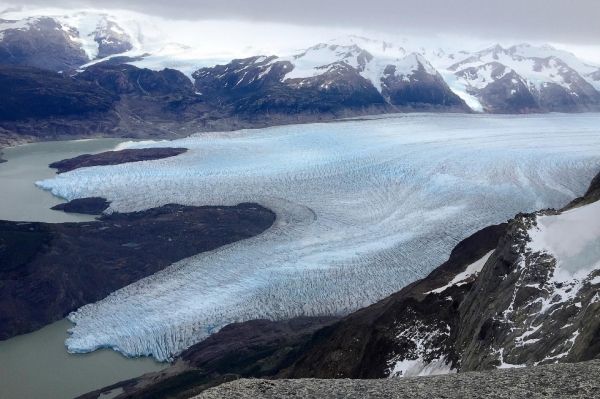Glaciers extending into freshwater lakes can form long, submerged terraces that menacingly rise above the surface when icy chunks fall into the water.
By using underwater sonar, researchers have found that a glacier jutting into a freshwater lake in southern Chile looks different underwater compared to ocean-bound glaciers in Greenland. Their findings, published in the journal Geophysical Research Letters, clarify how huge chunks of ice break off freshwater glaciers, and have implications for the safety of humans in the vicinity of these huge bodies of ice.
Until recently, it has been very difficult to determine the underwater shape of glaciers because getting too close can be dangerous. Researchers are now using ‘side-scanning sonars’ for this purpose. These torpedo-shaped devices are towed underwater by a boat, emitting pulses of sound. They are able to map the underwater geography based on the strength of the returning echo. Although some research has been done on glaciers extending from land into the ocean, such as in Greenland, less has been done for glaciers extending into freshwater lakes.
Read more at Hokkaido University
Image: This is an an aerial view of Grey Glacier, part of the Southern Patagonia Ice Field. Researchers obtained their data from the forward tip of the glacier. (Credit: S. Sugiyama, et al., Underwater Ice Terrace Observed at the Front of Glaciar Grey, a Freshwater Calving Glacier in Patagonia, Geophysical Research Letters, February 12, 2019)


